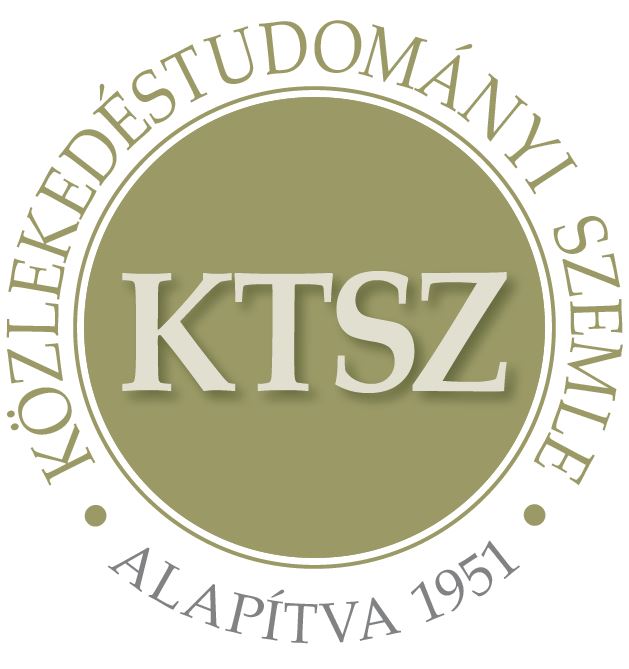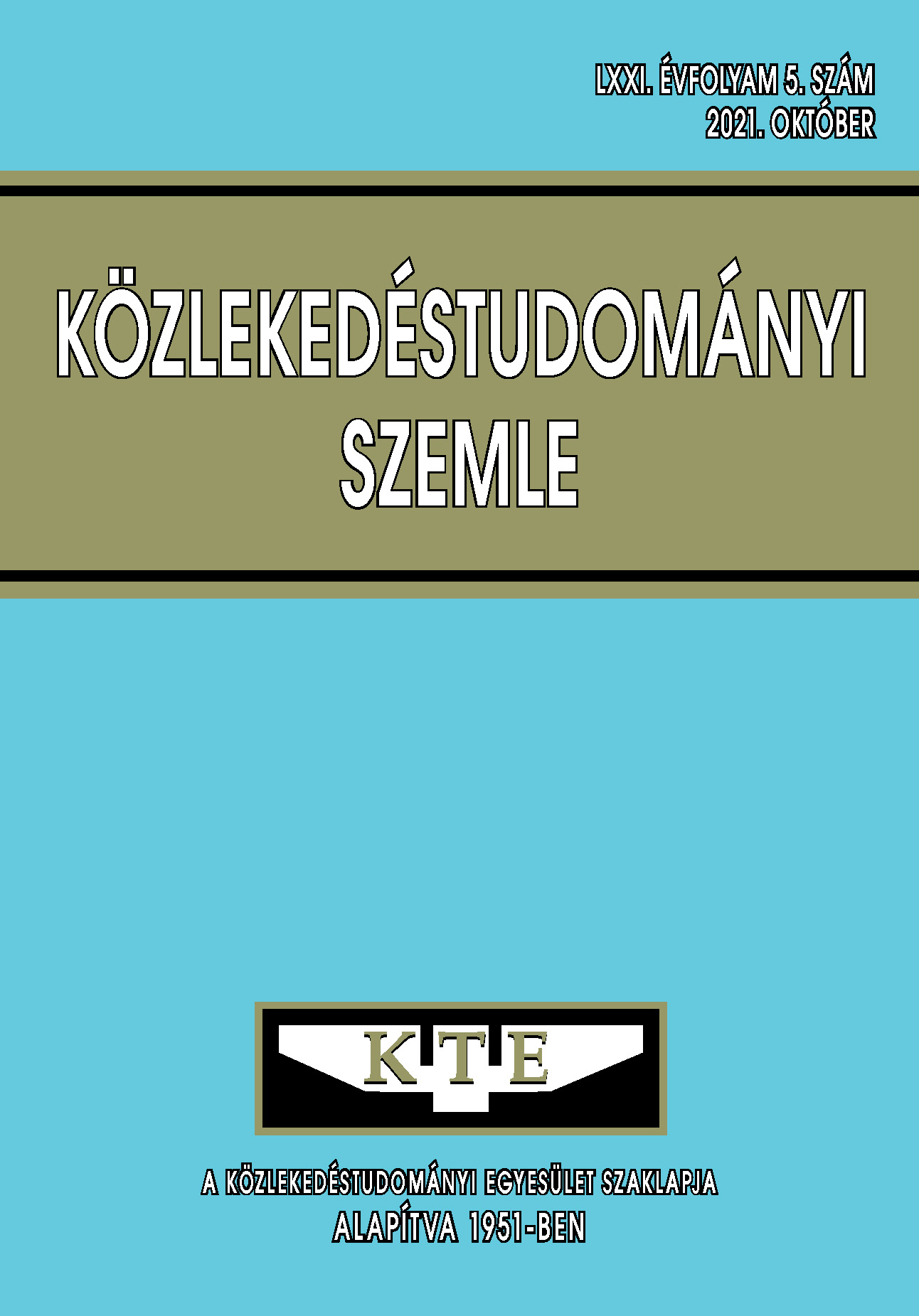Spatial estimation of urban vehicle traffic using kernel methods
Abstract
The authors investigated methods that can be used to estimate traffic volumes on unmeasured road segments. To this end, a new distance metric has been developed based on the traffic volumes measured in different crosssections. Based on the time series of the detectors, measured in the past, their similarity can be quantified. By transforming the pairwise similarities thus obtained, they become suitable for the spatial estimation of vehicle traffic. Using this metric, two kernel-based methods have been presented.
References
Lawrence A. Klein, Milton K. Mills, and David R. P. Gibson. Traffic detector handbook: Volume I. No. FHWA-HRT-06-108. Turner-Fairbank Highway Research Center, 2006.
Yang Liu, and Ning Zhu. "A multi-objective detector location optimization approach." In CICTP 2014: Safe, Smart, and Sustainable Multimodal Transportation Systems, pp. 1788-1800, 2014. DOI: https://doi.org/gt4f
Jianming Hu, Jingyan Song, Mingchen Zhang, and Xiaojing Kang. Topology optimization for urban traffic sensor network.Tsinghua Science and Technology, 13(2):229–236, 4-7 July, 2014, Changsha, China. DOI: https://doi.org/b9xnnf
Haixiang Zou, Yang Yue, Qingquan Li, and Anthony G. Yeh. An improved distance metric for the interpolation of link-based traffic data using kriging:a case study of a large-scale urban road network.International Journal of Geographical Information Science, 26(4):667–689, 2012. DOI: https://doi.org/bd3633
Brent Selby and Kara M Kockelman. Spatial prediction of traffic levels inunmeasured locations: applications of universal kriging and geographicallyweighted regression.Journal of Transport Geography, 29:24–32, 2013. DOI: https://doi.org/f4vv3x
Bumjoon Bae, Hyun Kim, Hyeonsup Lim, Yuandong Liu, Lee D Han,and Phillip B Freeze. Missing data imputation for traffic flow speed us-ing spatio-temporal cokriging.Transportation Research Part C: EmergingTechnologies, 88:124–139, 2018. DOI: https://doi.org/gdbch3
Michael A. Cox and Trevor F Cox. Multidimensional scaling. In Handbook of data visualization, pages 315-347. Springer, 2008. DOI: https://doi.org/gt4h
Ian T Jolliffe. A note on the use of principal components in regression. Journal of the Royal Statistical Society: Series C (Applied Statistics), 31(3):300-303, 1982. DOI: https://doi.org/dw25m4
Rasmussen, C. E. “Gaussian processes in machine learning”, Springer, Berlin, Germany, 2003. DOI: https://doi.org/fhqcww
Noel Cressie. The origins of kriging. Mathematical geology, 22(3):239-252,1990.
Michael James Sasena. Flexibility and e_ciency enhancements for constrained global design optimization with kriging approximations. PhD thesis, University of Michigan
Weijermars, Wendy, and Eric Van Berkum. "Analyzing highway flow patterns using cluster analysis." IEEE Intelligent Transportation Systems, 2005. DOI: https://doi.org/dswz6d
Articles published electronically are open access (OJS), freely available online and can be downloaded. Authors of articles are not charged any publication or publishing costs (APC). Users have the right to read, download, copy, print, and search the articles, or share the full text with a link.
Authors must declare that their submission has not been previously published in another journal, that financial support has been acknowledged, and that the list of references is complete and accurate, including specification of URLs and DOIs (if available). When submitting a draft article, each author approves the submitted version. Authors guarantee that the article is their original work. Authors are required to participate in the peer review process, follow the advice of reviewers, meet the prescribed deadlines, and, if any, withdraw the submission or correct errors.
All submitted articles are subject to peer review, where the editors request an independent evaluation from at least one expert, ensuring that the reviewer(s) have no conflicts of interest with the authors. The final decision is made by the Editor-in-Chief, who takes into account the evaluations and the suggestions of the editors. The editors and reviewers treat the submission confidentially.
The publisher and editors are committed to maintaining high ethical standards and to preventing publications that involve research misconduct. They follow the COPE guidelines on such ethical issues.
The authors retain copyright and grant the journal the right of first publication under the Creative Commons License (https://creativecommons.org/licenses/by-nc-nd/4.0), which allows others to share the work, while acknowledging the authorship of the work and the first publication in the journal.
The journal archives all published articles, and the journal's owner, the Hungarian Society of Transportation Sciences, will continue to operate the database even if the journal ceases to be published.















